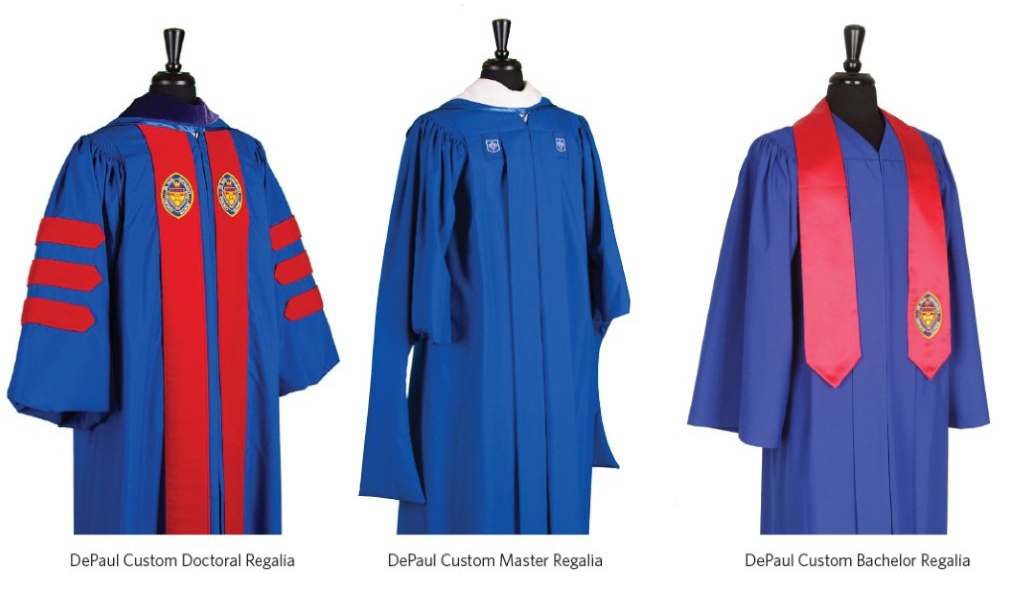The roots of academic dress date back to the 12th and 13th centuries, when universities were first forming and almost everyone was clothed in long flowing robes. Medieval scholars studied and worked in unheated buildings, and wore long gowns, hoods and eventually skull caps. Universities in the 14th century forbade "excess in apparel" and decreed that scholars wear a long gown. Universities in England were thought to be the first to make institutional rules governing academic dress.
DePaul University Robes

The robes worn by graduates at DePaul University are custom regalia. Graduates represent a tradition handed down from graduating class to graduating class.
Colors
Universities came to assign colors to specific subject areas, and that practice was standardized in the United States in the late 19th century. Colors used in academic dress have significance to the degree earned, but not the academic major. The following are the colors that DePaul uses for tassels and/or hood trim:
- Arts: white
- Business: drab
- Communication: crimson
- Education: light blue
- Doctor (business administration): drab/old gold
- Doctor (education): light blue
- Doctor (nursing practice): apricot/old gold
- Doctor (philosophy): royal blue/old gold
- Fine Arts: brown
- Juris Doctor: purple/old gold
- Law: purple
- Music: pink
- Non-profit management: drab
- Public administration/public policy: peacock blue
- Public health: salmon
- Science: golden yellow
- Science (nursing): apricot
- Science (physical education/sport): sage green
- Social work: citron
Gowns
The gown worn by a person earning a baccalaureate degree has long, pleated front panels and long, pointed sleeves, and is worn closed. The master's gown has very long sleeves, closed at the bottom, and the arms of the wearer are placed through an opening in the front of the sleeves. Doctoral gowns may be worn open, and they are distinguished by velvet panels around the neck and down the front of the gown.
Hoods
Both the master and the doctoral graduates wear hoods, the doctor's is the longest at four feet. Often hoods are lined with the official color of the University. DePaul's colors are blue and red. The velvet color on the hood corresponds to the graduate's discipline or college/school.
Caps & Tassels
Bachelor's caps include a mortarboard. The square mortarboard should be worn so that it sits parallel with the ground, with the tassel hanging to the right. During some commencement ceremonies, each graduate is hooded individually to signify the awarding of their degree. DePaul's ceremonies are large, and as a substitute for individual hooding of each graduate, the ceremony officiant directs all graduates to move their tassel from the right front side of their mortarboard to the left front side as a mark of the official awarding of their degree. Master's and doctor's caps are velvet.
Source
Sullivan, E. (1997). An Academic Costume Code and An Academic Ceremony Guide. American Council on Education Website [online].